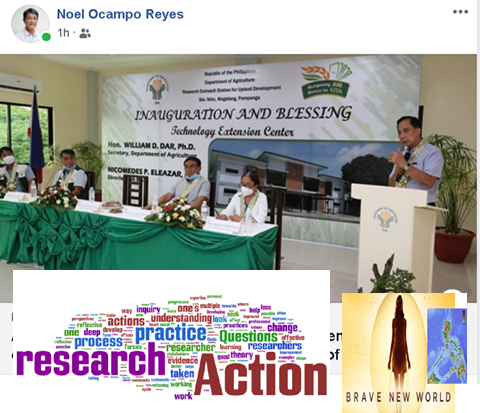Today, how come the Northern Foods Corporation, NFC, based in Sarrat, Ilocos Norte, owes tomato farmers of the Ilocos almost
With its huge farmer debt, the NFC has been hardly operating. Here comes the Department of Agriculture, DA, under Secretary of Agriculture William Dar, who now is, according to an official DA news release, “(allotting) P65 million to help (the NFC) get back on its feet.” During a visit to the NFC processing facility in Sarrat, Ilocos Norte on 26 September 2020 (image above), Mr Dar said:
We will extend needed financial assistance to the (NFC) to make it financially afloat and thus make it attractive for potential investors enroute to its privatization.
The total P65 Million consists of P26 Million from the Agricultural Competitiveness Enhancement Fund, ACEF, to help finance NFC operations; and P39 Million from the Agricultural Credit Policy Council, ACPC, so NFC can pay its arrears to farmers.
Mr Dar said, “We were informed that the company has an inventory of P120-M worth of tomato paste, which they can use to pay out the (ACEF and ACPC loans).”
Tomato is a high-value cash crop in the Ilocos Region, with a production area of 800 ha. The production system seems ideal. The NFC sources fresh ripe tomatoes, particularly the variety “Ilocos Red,” from 3,000 farmers in Ilocos Norte and Ilocos Sur. The NFC not only provides technical assistance but also arranges financing with fertilizers, pesticides and other inputs, including harvest containers. Farmers grow tomato from October to December, planting after the main rice crop. Harvest begins in January.
The NFC has a processing capacity of 500 metric tons of tomatoes every day, producing some 4,000 MT of tomato paste every processing season, from January to April.
In the Philippines, we have the brands Del Monte, Heinz, NutriAsia, UFC. Actually, those may be partially or wholly made from NFC tomato paste, differently processed and prepared by those ketchup companies. The NFC also supplies tomato paste to food chains, fish canners, and tomato sauce manufacturers. Its supply comprises 13% of the Philippines’ 30,000 MT yearly consumption.
Among private interests wanting to invest in the NFC is a group led by former Candaba, Pampanga Mayor Jerry Pelayo. Mr Pelayo says he will meet again with the NFC management to discuss details, including rehabilitation and upgrading of the processing facilities.
Pelayo’s group is also planning upgrading the NFC so it can process other raw materials such as mango and pineapple. This will ensure that the plant is productive not only for 4 months but occupied and productive throughout the year. In a way, farmers’ incomes can then be sustainable.
Sustainability is for the NFC – and the farmers.
You can’t have one without the other!@517















